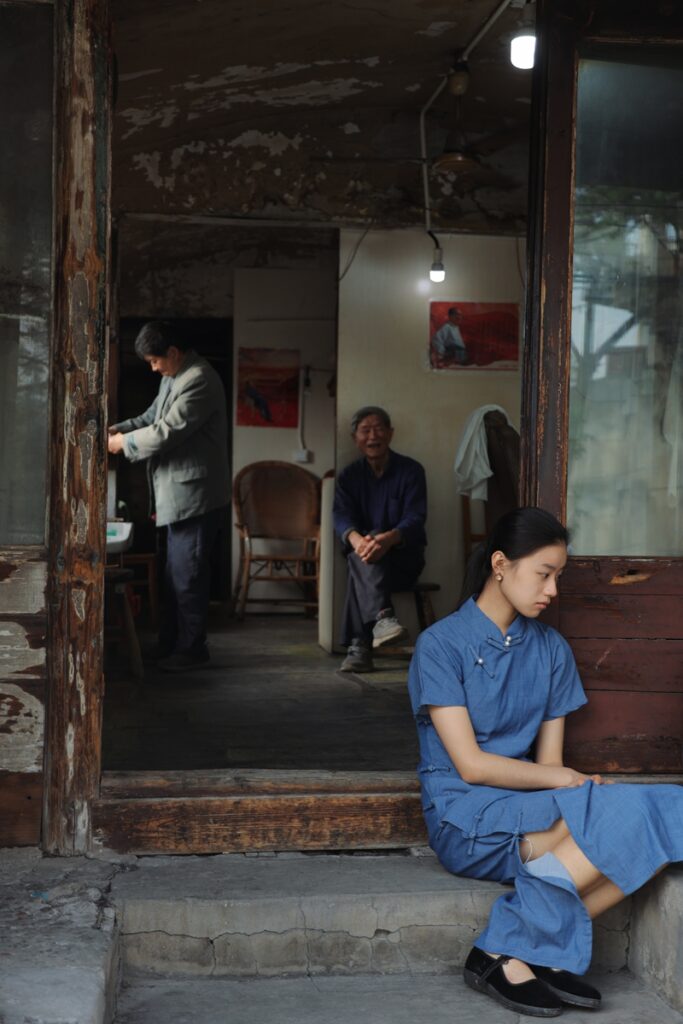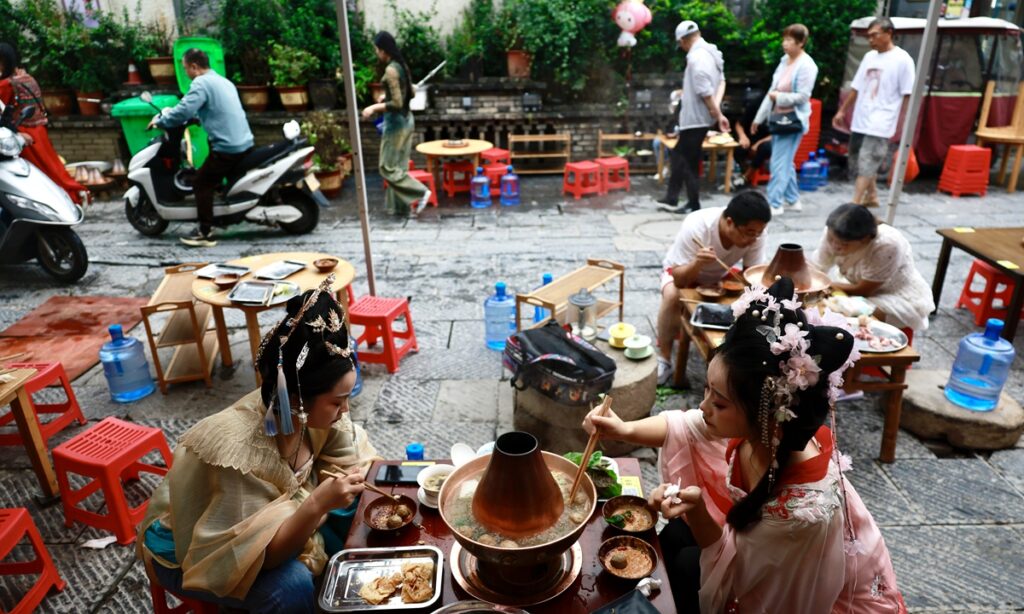A new cultural trend is sweeping through Chinese social media, capturing the hearts and imaginations of netizens across the country. Dubbed “small-town literature,” this phenomenon is rooted in nostalgic photography that evokes the essence of life in China’s smaller cities and counties. The trend, which taps into feelings of loneliness and longing, has sparked widespread discussion and debate online.
“Small-town literature” often portrays quaint, dimly-lit streets and weathered buildings, with young people dressed in vintage attire posing in ways that express deep, melancholic emotions. These images, accompanied by captions such as “can’t escape, can’t see through,” have become a powerful means of storytelling, blending photography with literary elements.
The trend has gained significant traction, with urban photographers and models venturing into smaller cities across China to capture the atmosphere of a bygone era. While traditional portrayals of small Chinese towns in literature and film often depicted desolation and nascent vitality, the current wave of small-town literature has been criticized for its gloomy and nostalgic portrayal of reality. Despite the criticism, it has quickly gained popularity on platforms like Sina Weibo and Douyin, garnering millions of views and shares.

As this trend continues to grow, it raises questions about the emotional appeal of small-town literature and its significance in the context of China’s rapid urbanization. What does the concept of “county town” mean to people of different generations? Can the true essence of Chinese county life still be captured and appreciated amid the wave of templated creations?
Photography blogger Jewey Li, one of the pioneers of the small-town literature trend, never anticipated that his and his students’ work would spark such widespread interest on social media. One of the most popular pieces is a photo by Li’s student, Yunier, featuring a pensive girl in a blue qipao sitting in front of an old-fashioned barber shop. The post received over 2.32 million likes and more than 416,000 shares on Douyin, with netizens contributing to the narrative by creating “micro stories” in the comments.
Zhang Yiwu, a cultural studies professor at Peking University, notes that small-town literature is more than just a literary genre; it has become a cultural phenomenon that resonates deeply with the masses. Li’s photography, which emphasizes melancholy yet determined gazes and bittersweet memories, has struck a chord with many, highlighting the nostalgia that drives this trend.
While the content of small-town literature may focus on county life, its creators employ a distinctly modern and social media-driven narrative style. These works, through specific poses and carefully chosen backdrops, tell stories that resonate on an emotional level, offering a new perspective on the lives of young people in China’s counties.
As small-town literature continues to gain momentum, it also sparks broader discussions about the state of China’s county towns. Topics such as the standard of living, daily expenses, and the experiences of young people returning to their hometowns are now trending on social media. This shift in focus marks a departure from the previously dominant interest in glamorous city life, as more people explore the realities of life in smaller, often overlooked communities.

The trend also reflects a growing desire to reconnect with the past and find solace in the simpler, more predictable life associated with small-town living. However, as more people venture into these areas, they are discovering that the differences between big cities and county towns are not as stark as they once seemed. With the government’s emphasis on rural revitalization, bustling commercial streets and thriving night markets can now be found in county towns across the country.
Ultimately, the rise of small-town literature signifies a broader cultural shift in China, as people seek to reconcile the rapid pace of urbanization with a yearning for the familiar and the nostalgic. As more tangible county town landscapes are explored and remembered, the popularity of this trend may continue to grow, offering new insights into the evolving cultural landscape of China.

